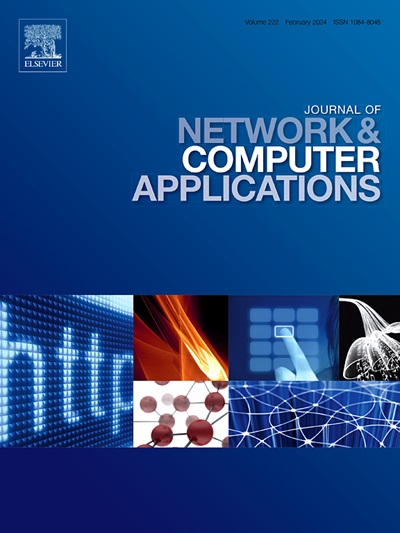PMMJC:用于JointCloud环境的基于首选项的多阶段匹配机制
IF 8
2区 计算机科学
Q1 COMPUTER SCIENCE, HARDWARE & ARCHITECTURE
引用次数: 0
摘要
随着数据密集型应用的兴起,对云服务的需求显著增加,催生了一种新的云2.0架构JointCloud。JointCloud促进了云服务提供商(csp)之间的协作,以满足全球计算需求。然而,随着消费者需求日益多样化,服务匹配的挑战变得更加复杂,特别是在平衡用户偏好与CSP资源属性(如声誉和数据相关性)方面。为了解决这一问题,本文提出了基于偏好的多阶段匹配机制(PMMJC)。该机制集成了用户偏好、CSP信誉、数据相关性、风险因素和服务质量(QoS)指标,采用多维优化方法进行服务匹配。首先,采用基于规则的过滤方法,快速剔除不满足基本资源需求的csp,缩小搜索空间;接下来,将统一流形逼近和投影(UMAP)降维和最大信息系数估计器(MICe)相结合,评估数据相关性并优化计算效率。然后,应用覆盖决策方法导出Pareto最优解集,确保候选csp在多个维度上的平衡性能。最后,采用加权方法和熵权模糊综合评判,动态适应用户偏好,生成个性化匹配结果。实验结果表明,与AHP-IOWA和Fuzzy-ETDBA等基准方法相比,PMMJC在匹配效率、数据关联精度、多目标平衡和用户满意度等方面表现优异,显著提高了JointCloud环境下的服务匹配质量。本文章由计算机程序翻译,如有差异,请以英文原文为准。
PMMJC: A preference-based multi-stage matching-mechanism for JointCloud environments
With the rise of data-intensive applications, the demand for cloud services has increased significantly, driving the emergence of JointCloud, a novel cloud 2.0 architecture. JointCloud facilitates collaboration among Cloud Service Providers (CSPs) to meet global computational demands. However, as consumer needs become increasingly diversified, the challenge of service matching has grown more complex, particularly in balancing user preferences with CSP resource attributes, such as reputation and data relevance. To address this challenge, this paper proposes a preference-based multi-stage matching mechanism (PMMJC). This mechanism integrates user preferences, CSP reputation, data relevance, risk factors, and Quality of Service (QoS) metrics, employing multi-dimensional optimization methods for service matching. First, a rule-based filtering method is used to quickly eliminate CSPs that do not meet basic resource requirements, narrowing the search space. Next, Uniform Manifold Approximation and Projection (UMAP) dimensionality reduction and the Maximal Information Coefficient estimator (MICe) are combined to assess data relevance and optimize computational efficiency. Then, a coverage decision-making method is applied to derive the Pareto optimal solution set, ensuring balanced performance across multiple dimensions for candidate CSPs. Finally, weighted methods and entropy-weighted fuzzy comprehensive evaluation are used to dynamically adapt to user preferences and generate personalized matching results. Experimental results demonstrate that compared to benchmark methods such as AHP-IOWA and Fuzzy-ETDBA, PMMJC excels in matching efficiency, data relevance accuracy, multi-objective balance, and user satisfaction, significantly enhancing service matching quality in the JointCloud environment.
求助全文
通过发布文献求助,成功后即可免费获取论文全文。
去求助
来源期刊

Journal of Network and Computer Applications
工程技术-计算机:跨学科应用
CiteScore
21.50
自引率
3.40%
发文量
142
审稿时长
37 days
期刊介绍:
The Journal of Network and Computer Applications welcomes research contributions, surveys, and notes in all areas relating to computer networks and applications thereof. Sample topics include new design techniques, interesting or novel applications, components or standards; computer networks with tools such as WWW; emerging standards for internet protocols; Wireless networks; Mobile Computing; emerging computing models such as cloud computing, grid computing; applications of networked systems for remote collaboration and telemedicine, etc. The journal is abstracted and indexed in Scopus, Engineering Index, Web of Science, Science Citation Index Expanded and INSPEC.
 求助内容:
求助内容: 应助结果提醒方式:
应助结果提醒方式:


